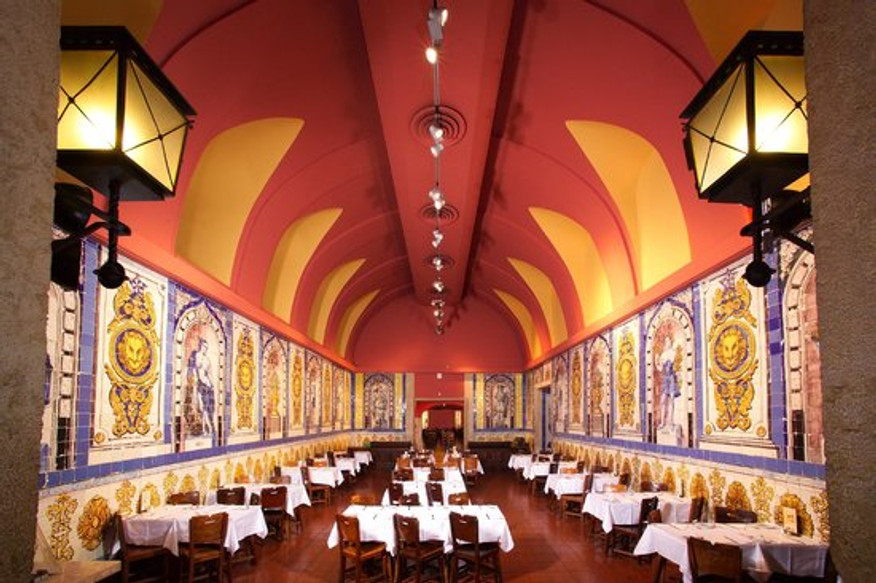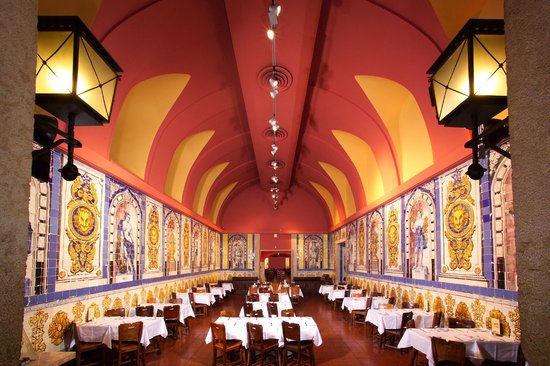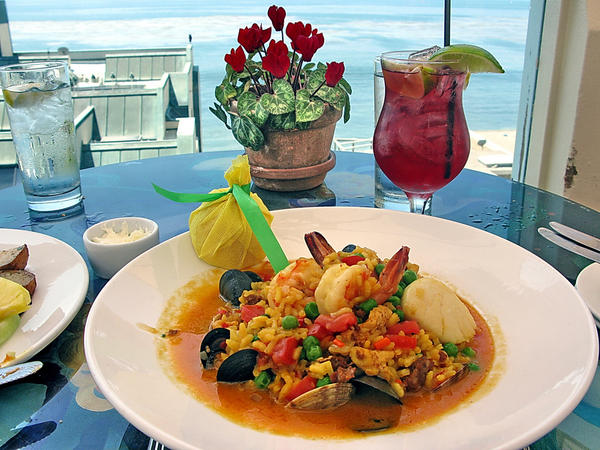Jun 24th 2016 - Guest
Restaurant Decor Styles: First Impressions Woo Clients
How would you decorate your restaurant? In particular, what kind of photos should adorn the wall? Naturally, it depends on the cuisine on offer and the "look" you are trying to convey.
A nice talking point?
All restaurateurs should think carefully about decor. Diners' first impressions – after all – concern appearance rather than food. And, as they say, you never get a second chance to make a good first impression. Is the atmosphere warm and inviting? Are the surroundings aesthetically pleasing? Imagine a tense meal between an estranged couple. Is there something on the walls that can distract them during awkward silences? Is there a unique feature of the restaurant that could become a talking point during a nerve-wracking first date?
Seaside scenes
With summer approaching, let’s start with your seaside fish restaurant. Maritime scenes and photos of the beach are always popular. Dolphins are particularly beautiful, intelligent and graceful creatures and photos of them tend to draw admirers – they are always the number one attraction at summer aqua marine shows and go down well, particularly with children. Perhaps they would look good in a turquoise-blue frame, especially if darting out of the ocean?

- Cayusa / Foter.com / CC BY-NC
Reflecting the national culture
New York has so many ethnic restaurants and the decor invariably reflects the nationality of the cuisine. Thai restaurants always seem to have the most dramatic interiors. One of my favorites has dark, oceanic-blue walls decorated with delicate golden pastel leaves carved out in the shape of the sun. It always seems that Thai restaurants can get away with more exotic colors!
Italian restaurants seem to favor pictures of past diners, usually well-heeled, showcased in traditional black and white frames. But there are so many wonderful sites in Italy that it seems a shame not to show some of them. An unusual photo of Venice, for example, could transform the interior of a restaurant provided it is done with class and originality.
Tiles tell a tale
One of our favorite Spanish restaurants is filled with artwork depicting Spanish singers, statuesque flamenco dancers and ample-girthed Mexican guitarists. This may sound slightly clichéd but it's all in the handling and presentation. Ornamental tiles often adorn the walls of both Spanish and Portuguese restaurants. One of Lisbon's most famous restaurants, Cervejaria Trinidade (below) in a converted monastery, has the most magnificent azulejos everywhere. Dining there was an experience that will stay with me until they close the lid on the coffin. Yet imitators in the Big Apple should be careful. When tastefully done, it can look very attractive. When done carelessly – and in a confined space – it can make diners feel they are eating in a bathroom!
Balkan restaurants have their own distinctive colors. Hence most eateries will feature some of the following: tables with woven red table-clothes, multi-colored tapestry on wooden benches, pottery and copper pails and attractive ceiling decorations, including carved ornaments. Traditional Greek restaurants could consider erecting Ionian-style columns – to give diners more privacy – to spectacular effect. And we should add that Greek music is usually a winner too.
British restaurants, perhaps influenced by the constraints of political correctness, tend not to flaunt their "Britishness" at home. In the US, however, they can afford to be somewhat more brazen. Having said that, draping the Union Jack all over the tables and walls seems rather lame. British restaurateurs could favor photographs of some landmarks that are not so well known to the American public – not Buckingham Palace but Leeds Castle perhaps, not Westminster Abbey but 221b Baker Street – given the perennial popularity of Conan Doyle's immortal but totally fictional Sherlock Holmes.
French restaurants tend to favor simple, streamlined decor. The traditional Café Rouge- type restaurant is pink/reddish in color and with a blackboard or white board displaying the menu. This is a conscious effort to preserve simplicity and reflect the look of the old-style café in the local square. Or perhaps, since the food is French, owners prefer to let the cuisine speak for itself!
A themed dining experience
We have covered specific nationalities. Of course, another consideration is the "genre" of food on offer. A restaurant offering traditional barbecue recipes, for example, may opt for photographs of more rustic scenes or farming ornaments: perhaps toy tractors and harvesting equipment.
The walls of a restaurant have to strike the right balance. They must have some interesting, eye-catching decorations but not look "over-busy". Too many ornaments within easy reach may also prove a nightmare for families with children. More expensive ornaments should be at a respectable height. If the restaurant is not so family-friendly, then you can afford to have objects at a more accessible distance.
Old newspapers, exquisitely framed, often provide a point of interest, especially if you are decorating your restaurant to portray a bygone era. After the enormous success of the film The Great Gatsby, more and more bars, for example, are trying to capture the carefree magnificence and opulence of the Roaring Twenties and the speakeasy style. This is a great opportunity for New York restaurants to cash in on the retro craze.
Music, newspapers, objets d'art and commemorative objects, carefully chosen, all evoke an era. Of course, another idea is perhaps obvious but, strangely one seldom seen in restaurants. That is to display images of the dishes themselves. Photographs often adorn the menus – and this is a very good idea increasingly favored by restaurants – but are usually not on display on the wall. Great care should be taken with this. A meal may taste delicious but it may not necessarily look so, especially if the colors clash and the overall artistic impression fails to make the mouth water. As always in the restaurant business, the key to a diner's heart is through his eyes as well as his taste buds.




